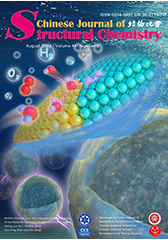
Ni(OH)2 Derived from NiS2 Induced by Reflux Playing Three Roles for Hydrogen/oxygen Evolution Reaction
Sheng-Jun Xu*, Ya-Nan Zhou, Guo-Ping Shen and Bin Dong* Submit a Manuscript
Xingwang Yan, Bin Wang, Mengxia Ji, Qi Jiang, Gaopeng Liu, Pengjun Liu*, Sheng Yin, Huaming Li and Jiexiang Xia*
Chin. J. Struct. Chem. 2022, 41, 2208044-2208051 DOI: 10.14102/j.cnki.0254-5861.2022-0141
July 25, 2022
CQDs, BiOBr, photocatalysis, pollutant degradation
ABSTRACT
Designing simple, efficient, and environmentally friendly methods to
construct high-efficient photocatalysts is an important strategy to promote the
further development of the field of photocatalysis. Herein, flower-like carbon
quantum dots (CQDs)/BiOBr composite photocatalysts have been prepared via
in-situ synthesis by mechanical ball milling in the existence of ionic liquid. The CQDs/BiOBr composites exhibit higher
photo-degradation performance for tetracycline (TC) than BiOBr monomer and the
commercial Bi2O3 under visible light irradiation. For
comparison, the different Br sources and synthetic methods are chosen to
prepare BiOBr and CQDs/BiOBr composites. Photocatalysts prepared by ball milling
and ionic liquid present significantly enhanced photocatalytic performance for
removing TC. In addition, the introduction of CQDs could distinctly enhance the
photocatalytic performances of pure BiOBr.
The reason is that CQDs as electron acceptor effectively separate electrons and
holes and inhibit their recombination. The intermediates during photocatalytic
degradation were tested using liquid chromatography-mass spectrometry (LC-MS)
and possible degradation pathways were given. During degradation, •OH, O2•- and h+ were identified to be the main active species based on
electron spin resonance (ESR) spectra and free radical trapping experiments. A possible mechanism of
CQDs/BiOBr with enhanced photocatalytic performances was further proposed.






